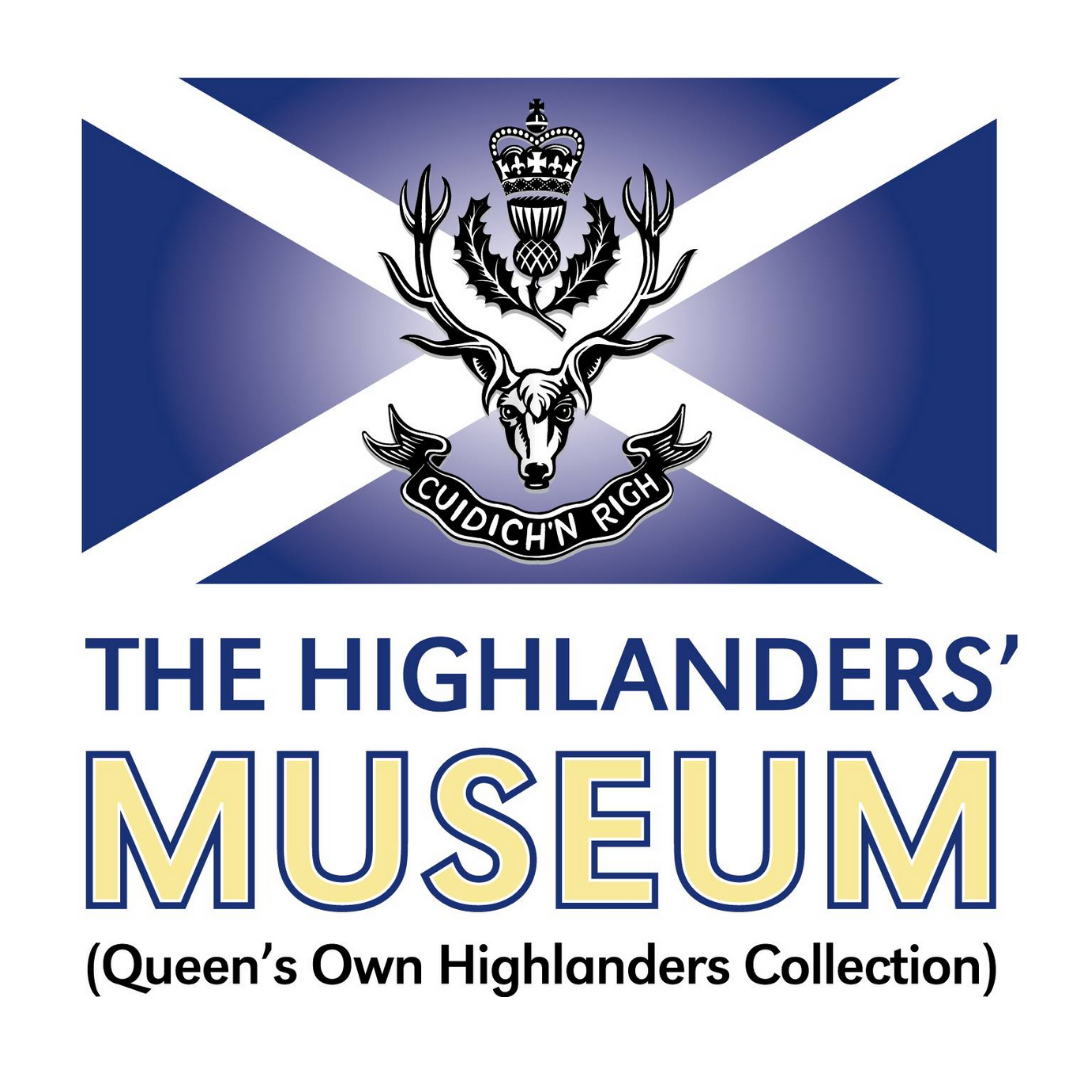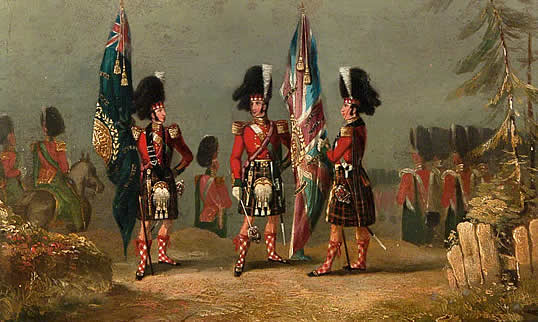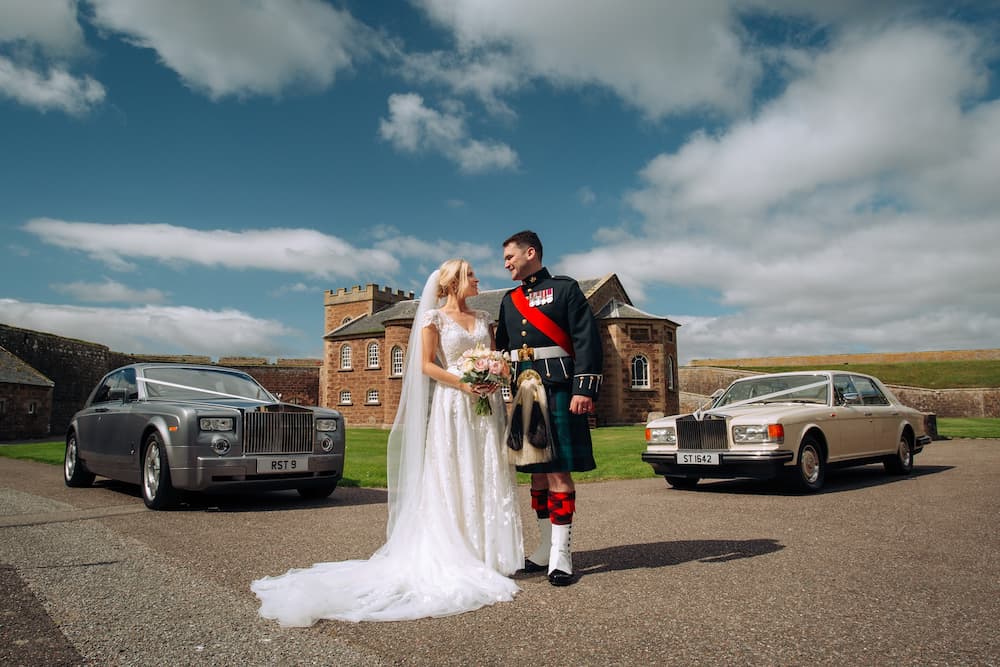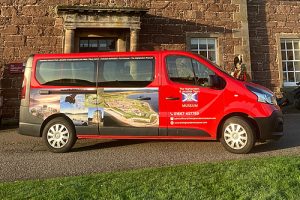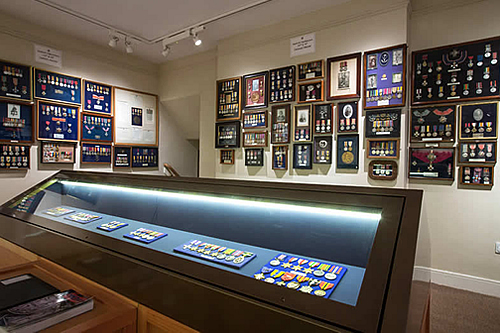Our collections explore the 250 year history of the Regiments which we represent.
Primarily recruited from the clans and communities of the Highlands and Islands, these regiments were renowned the world over for their hardiness and ferocity in battle. In turn the military also provided opportunities and livelihoods to the often poor and isolated communities in the North of Scotland.
Founded over 60 years ago, the Museum is home to:
Gallantry & Campaign medals
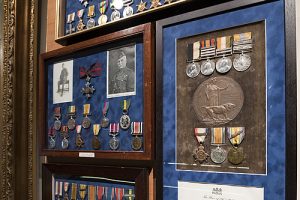
Flags, colours and pennants
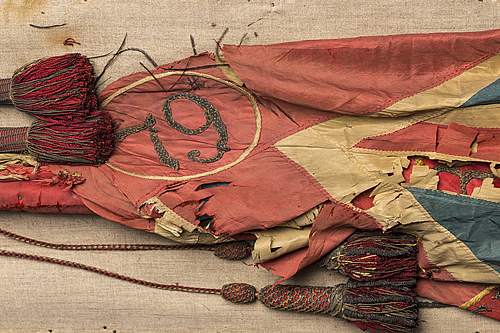
from various campaigns
Silver and personal artifacts
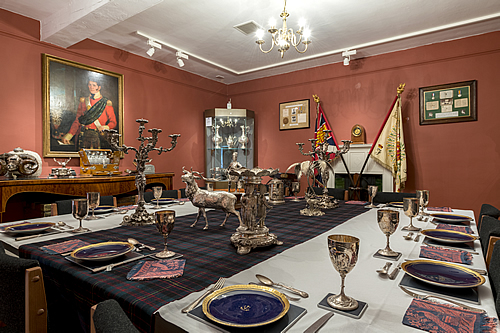
Carried by members of the Regiment since 1778
Edged Weapons and firearms
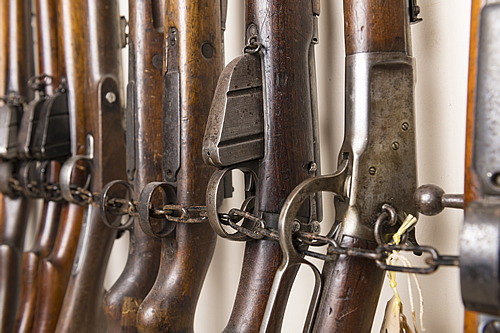
Used during a variety of campaigns and time periods.
16 Victoria Crosses
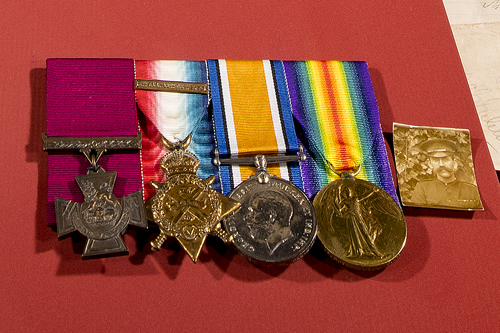
A box used by Adolf Hitler
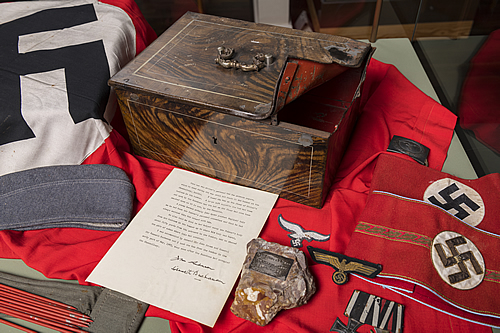
for his personal papers.
regimental history
We also hold a vast array of archival material including personal letters, photographs and diaries, as well as regimental diaries, books and magazines.
soldiers’ stories
- Piper Kenneth Mackay
- Corporal Sydney Ware VC
- Sergeant Alexander Edwards VC
- 1st Camerons at Dunkirk
- Coup de main, Brunei
- 1st Battalion Queen’s Own Highlanders (Seaforth and Camerons) in the Gulf War 1991
- Battle Honour
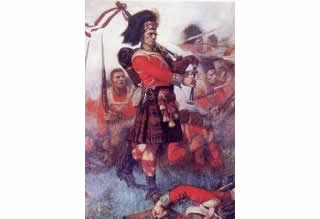 Piper Kenneth Mackay was born and brought up in the village of Reay on the North coast of Caithness.
Piper Kenneth Mackay was born and brought up in the village of Reay on the North coast of Caithness.
At the Battle of Waterloo in 1815 he famously ignored furious incoming enemy fire to play his pipes to encourage a beleaguered 79th Cameron Highlanders to ultimate victory.
During sustained cavalry attacks by Napoleon’s Army on Allied positions at the Battle, Piper MacKay stepped outside the relative security of the regimental square to play the rousing ancient tune Cogathd na Sithd (War or Peace, the Gathering of the Clans). This act of individual bravery became famous after the battle.
After the battle the 79th were stationed in Paris and during this time Mackay was presented with a silver set of pipes by King George III.
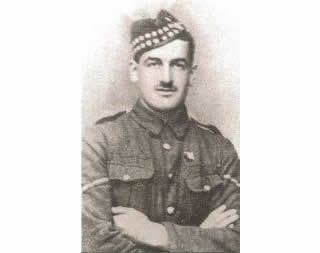 Cpl Sydney Ware was awarded the Victoria Cross at Sanniyat, Mesopotamia on 6th April 1916 for conspicuous bravery. His cool gallantry had been marked during the advance, was one of the few men remaining unwounded. He picked up a wounded comrade and carried him some 200 yards to cover and then returned for others, moving to and fro under very heavy enemy fire for more than two hours, until he had brought in all his wounded and was completely exhausted. His family still visit the museum annually.
Cpl Sydney Ware was awarded the Victoria Cross at Sanniyat, Mesopotamia on 6th April 1916 for conspicuous bravery. His cool gallantry had been marked during the advance, was one of the few men remaining unwounded. He picked up a wounded comrade and carried him some 200 yards to cover and then returned for others, moving to and fro under very heavy enemy fire for more than two hours, until he had brought in all his wounded and was completely exhausted. His family still visit the museum annually.
 Sergeant Alexander Edwards from Lossiemouth was awarded the Victoria Cross for his gallant action at the 3rd Battle of Ypres whilst serving with the 1/6th Battalion Seaforth Highlanders.
Sergeant Alexander Edwards from Lossiemouth was awarded the Victoria Cross for his gallant action at the 3rd Battle of Ypres whilst serving with the 1/6th Battalion Seaforth Highlanders.
“For most conspicuous bravery in attack, when, having located a hostile machine gun in a wood, he with great dash and courage, led some men against it, killed all the team and captured the gun.”
He was wounded in the arm during the action, but went on to stalk and kill a sniper and to lead remnants of his Company to capture the final objective. He was decorated with the VC by King George V at Buckingham Palace on 26th September 1917.
Sadly he was killed on his return to the front in March 1918. Before the War he had been a caddie at Lossiemouth Golf Course; a memorial stone to his memory still stands on the first fairway.
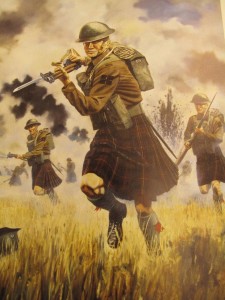 On 31st May 1940, having withdrawn to Dunkirk, the 1st Camerons embarked on the ships which were to evacuate it to the UK. The 1st Battalion The Queens Own Cameron Highlanders, although by then reduced to a strength of seventy nine, was still an effective fighting unit and it still wore the kilt. It was the last Highland Battalion to wear the kilt in action at the River Escaut in May 1940.
On 31st May 1940, having withdrawn to Dunkirk, the 1st Camerons embarked on the ships which were to evacuate it to the UK. The 1st Battalion The Queens Own Cameron Highlanders, although by then reduced to a strength of seventy nine, was still an effective fighting unit and it still wore the kilt. It was the last Highland Battalion to wear the kilt in action at the River Escaut in May 1940.
The 1st Bn. was re-formed in Richmond, Yorkshire and was made up of drafts from the Depot Cameron Highlanders, the West Yorkshire Regiment, the Green Howards and the Highland Light Infantry. They embarked for service in India on 11th April 1942. Later they were heavily involved in halting the Japanese advance at Kohima where they again suffered with 283 casualties.
The Old High Church in Inverness which is the Camerons Kirk has set up a WW1 memorial and recently a plaque to the fallen at Kohima.
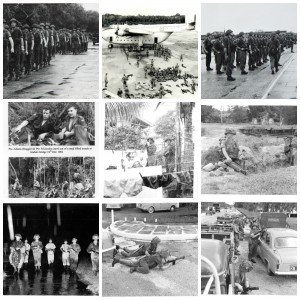 The Queens’ Own Highlanders (Seaforth and Camerons) Coup de main, Brunei on 8th December 1962, an armed rebellion broke out in Brunei on the northern coast of the island of Borneo. A rebel force ruthlessly attacked the Sultan’s palace, various police stations and seized the Shell oilfield at Seria, taking the innocent people who worked there hostage.
The Queens’ Own Highlanders (Seaforth and Camerons) Coup de main, Brunei on 8th December 1962, an armed rebellion broke out in Brunei on the northern coast of the island of Borneo. A rebel force ruthlessly attacked the Sultan’s palace, various police stations and seized the Shell oilfield at Seria, taking the innocent people who worked there hostage.
To keep the peace and return the rule of law two companies of the Queen’s Own Highlanders (Seaforth and Camerons) moved at very short notice, one by air and one by sea, to Brunei.
In a daring air landing operation they captured the airfields and seized back the police station. During a heroic sea assault they also defeated a strong rebel force at the Sultan’s palace and released 46 European hostages. Even today this extraordinary and gallant action is used as one of the best examples of swift armed response to a crisis using air, sea and land forces.
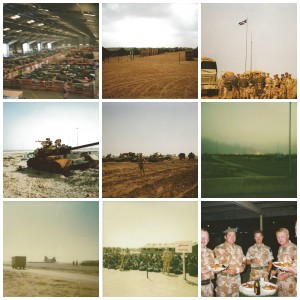 The 1st Battalion Queen’s Own Highlanders (Seaforth and Camerons) took part in Operation Desert Storm, the military action to recover Kuwait from the occupying forces of Iraq. The battalion deployed piecemeal, Battalion Headquarters providing command for the Armoured Delivery Group, the reinforcements of vehicles and crews, including three armoured squadrons and three armoured infantry companies, which were ready to replace casualties if they occurred. A (Atbara) Company Group provided the guard force for HQ 1 Armoured Division in the field, and B (Alamein) Company Group the guard for Headquarters British Forces Middle east in Riyadh. The battalion also provided reinforcements for units of the 7th and 4th Armoured Brigades, including 1st Battalion Royal Scots and 3rd Battalion Royal Regiment of Fusiliers. The Regimental Band deployed as medical orderlies in October 1990 under command of 1st Armoured Division Field Ambulance.
The 1st Battalion Queen’s Own Highlanders (Seaforth and Camerons) took part in Operation Desert Storm, the military action to recover Kuwait from the occupying forces of Iraq. The battalion deployed piecemeal, Battalion Headquarters providing command for the Armoured Delivery Group, the reinforcements of vehicles and crews, including three armoured squadrons and three armoured infantry companies, which were ready to replace casualties if they occurred. A (Atbara) Company Group provided the guard force for HQ 1 Armoured Division in the field, and B (Alamein) Company Group the guard for Headquarters British Forces Middle east in Riyadh. The battalion also provided reinforcements for units of the 7th and 4th Armoured Brigades, including 1st Battalion Royal Scots and 3rd Battalion Royal Regiment of Fusiliers. The Regimental Band deployed as medical orderlies in October 1990 under command of 1st Armoured Division Field Ambulance.
The ground campaign began on G Day, 24th February 1991, and lasted for 100 hours. The 1st Armoured Division entered Iraq through the breach in the frontier obstacles cleared by US engineers. When the ceasefire was declared at 0800 hours on 28th February, the battalion regrouped about 20 miles north-west of Kuwait City.
One of the most tragic events of the Gulf War was the attack by a US aircraft on 26 February 1991 on a column of vehicles in the 3rd Battalion Royal Regiment of Fusiliers Battle Group when two Warrior Armoured Fighting Vehicles were hit. Among those Killed in Action were three members of the 1st Battalion Queen’s Own Highlanders (Seaforth and Camerons) who were serving as reinforcements with 3 RRF. The soldiers were: 24823921 Private Neil Walker Duncan Donald, 24755716 Private Martin Ferguson and 24815901 Private John William Lang
The battalion returned to Munster in late March 1991.
For its part in the Gulf War the 1st Battalion Queen’s Own Highlanders was awarded the Battle Honour: GULF 1991
Weddings
Your wedding should be one of the most unforgettable days of your life. Make it a day to remember at the Fort George Chapel and The Highlanders’ Museum.
Minibus Tour
On holiday? Then come and adventure in the footsteps of the Highland Clansmen. Join us on an epic one day minibus tour of the Highlands.
The Collection
Our Collection is one the largest regimental display outside London. Founded over 60 years ago, the Museum houses more than 50,000 objects.
Research
The archive at The Highlanders’ Museum (Queen’s Own Highlanders Collection) covers six British regiments & our allied regiments from overseas.
